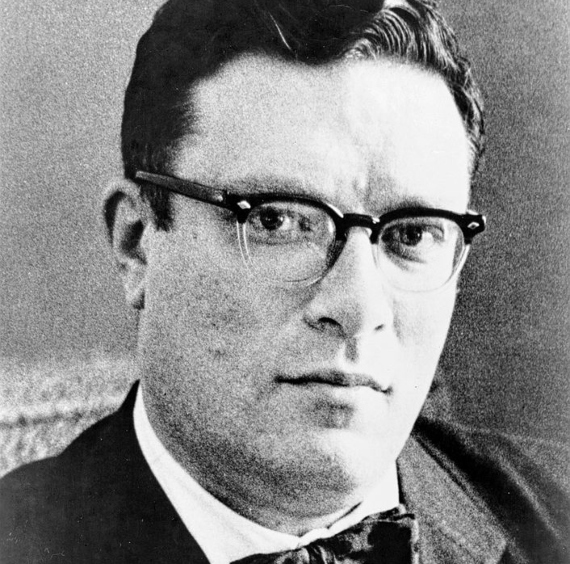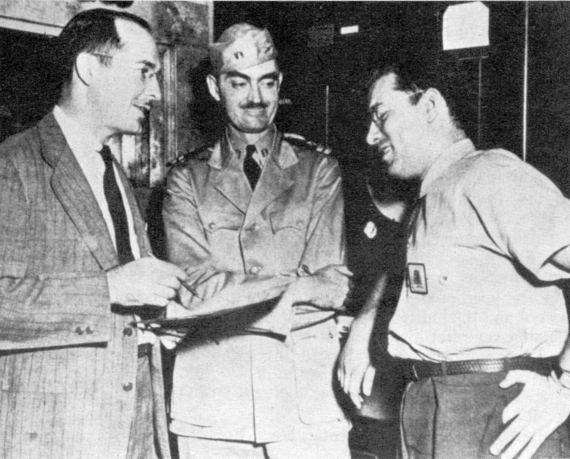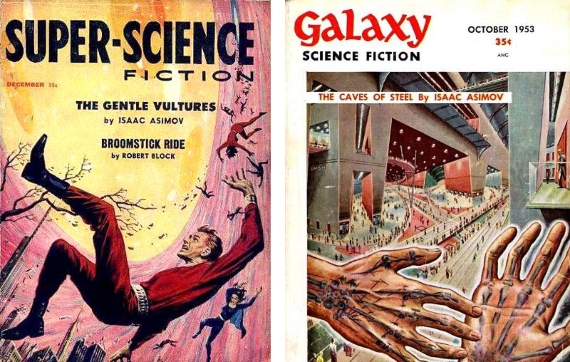Isaac Asimov, one of the Big Three—along with Arthur C. Clarke and Robert Heinlein—who brought science fiction literature to its golden age in the middle of the 20th century, used to celebrate his birthday on the second of January. But the man who bequeathed us the three laws of robotics was himself a great fictional character, starting with the first of his fictions—his own date of birth. Born in Petrovichi, a remote village in rural Russia, the day that he entered the world left no record even in the memory of his family, who came up with tentative range of dates between October 4, 1919 and January 2, 1920; it was Asimov himself who chose this last date as his birthday.
That childhood in a Jewish family in Russia was brief. When Asimov ( (January 2, 1920 – April 6, 1992) was three, his family emigrated to the United States, but first Asimov had to overcome a lethal health threat that almost left the world without the author of the Foundation book series. At the age of just one, he and 16 other children in his hometown developed severe pneumonia. Only he survived. After settling in Brooklyn with his parents and sister, little remained of the Russian with which many identify him. In fact, he never learned this language, and of his roots he only kept the Yiddish of his family.

At this stage in his life the writer and the biochemist, which would be his eventual university education, were not yet seen, but his voracious appetite for reading was evident from an early age. His family’s succession of candy stores, which also sold newspapers and magazines, gave him unlimited access to new reading material. He liked so much to immerse himself in reading material that as a child he dreamed of pursuing a profession not on the list of usual job preferences for children. His love for small enclosed spaces, the opposite of claustrophobia, led him to imagine himself operating a kiosk in the New York City subway so he could spend his days reading with the background hum of the trains.
His penchant for science set the path for his university studies, but at first it was not chemistry, but zoology that he chose. It was when he had to dissect an alley cat that he decided to change his specialty to one in which he only had to handle molecules. However, his scientific career was rather short. After a brief period of service as a naval chemist during World War II, he soon began to earn more money from his writing than from his academic work.

That short military experience was one of the only two occasions in his life when he flew on a plane. Even as a successful author, travelling with his books and giving lectures, his fear of flying was so intense that he became a regular cruise ship passenger, where his scientific talks were often part of the on-board entertainment program, a rare privilege for the lucky tourists.
Fan of Sherlock Holmes
With his more than 500 literary works, his place at the pinnacle of science fiction was more than assured, but perhaps only his die-hard fans know about his other great literary passion: mystery and detective stories. A member of The Baker Street Irregulars, the main Sherlock Holmes fan organization, Asimov wrote a short story according to which Professor Moriarty’s fictitious book The Dynamics of an Asteroid concealed the destruction of a planet inhabited by an intelligent species. However, Asimov confessed his predilection for Agatha Christie. His outstanding role as a sceptic emerged from the merger between mystery and science, and he was a founding member of what is today called the Committee for Skeptical Inquiry (CSI).

But perhaps even more remarkable and unknown is his frustrated foray into the musical genre. In 1974, Paul McCartney asked him to write a film about a rock band that was being impersonated by invading aliens. Without being a big fan of rock music, Asimov accepted the challenge, which was reflected in a script outline in which he didn’t include the draft dialogue that McCartney had given him. With his pride probably hurt, the ex-Beatle shelved the project, which today lies in the archives of Boston University waiting to be rediscovered.
On April 7, 1992 the newspaper The New York Times published the obituary of Asimov, who died the day before due to heart and kidney failure, according to his brother Stanley. It was only learned ten years that he had died of AIDS after contracting HIV from a blood transfusion during an operation in 1983. He was a character worthy of his best fiction, even after his death.
Comments on this publication